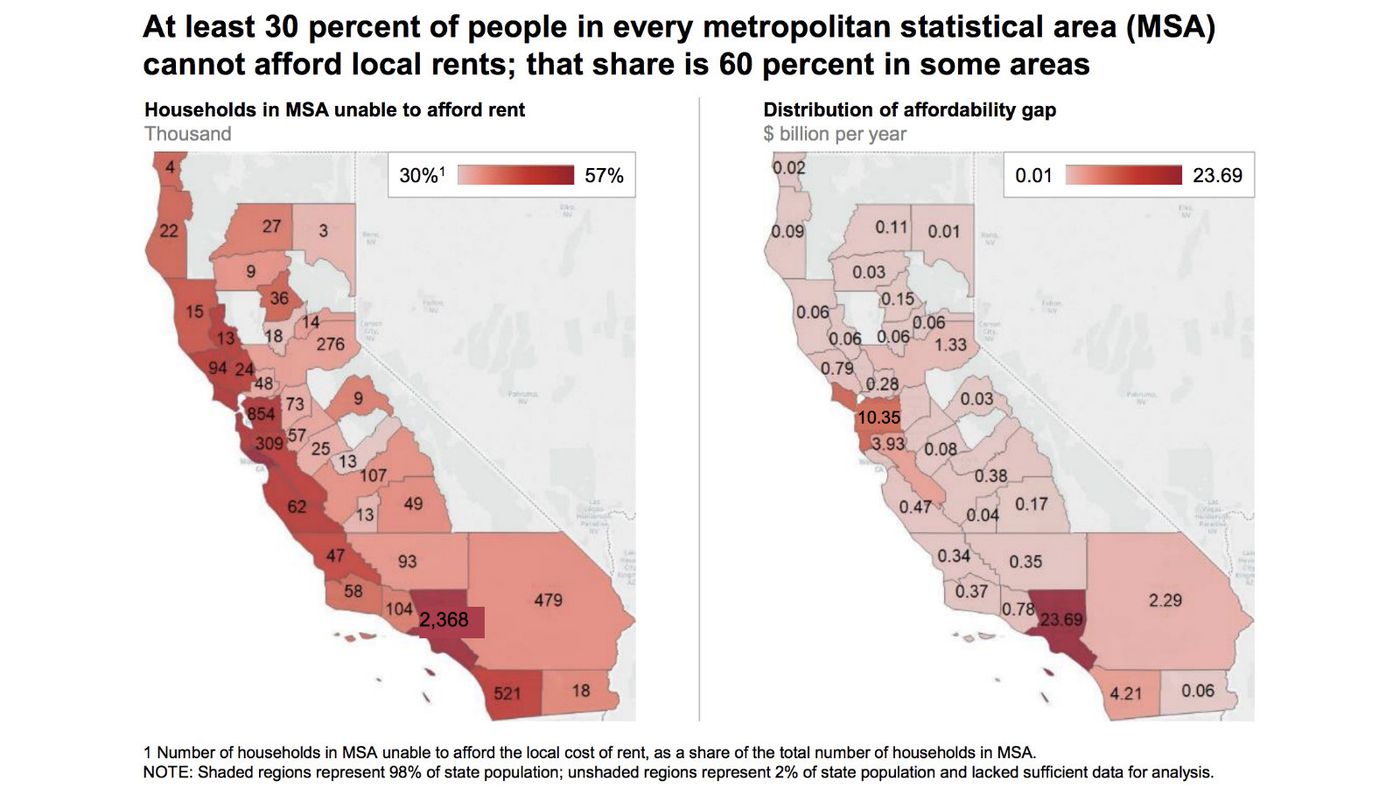California’s housing crisis reaches from the homeless to the middle class

There are many reasons for California’s failure to keep up with housing demand. One is the “incumbency effect” — existing residents are hostile to changes that might increase traffic, attract residents of lower income and different ethnicities, or produce other changes that could lower their property values. Existing residents who vote plainly have more clout with their elected officials than nonresidents waiting for a chance to move in.
Whatever the reasons for California’s housing shortage, the harvest is now coming in. The state will need anywhere from 1.8 million to 3.5 million new homes by 2025 to absorb existing demand and future population growth. But its current construction pace of fewer than 80,000 new homes per year falls short by 100,000 homes a year of meeting even the lowest estimate of demand.
“As affordability becomes more problematic, people ‘overpay’ for housing, ‘over-commute’ by driving long distances between home and work, and ‘overcrowd’ by sharing space to the point that quality of life is severely impacted,” warned the California Department of Housing and Community Development in its most recent housing assessment, issued in February.
The crisis threatens to cut the state’s economic boom off at the knees. The housing shortage costs California $140 billion a year — the equivalent of 6% of gross state product — according to a 2016 calculation by McKinsey & Co. That doesn’t include business opportunities or expansions forgone or relocations instituted by employers because they can’t recruit or keep workers in the state’s high-cost housing environment.